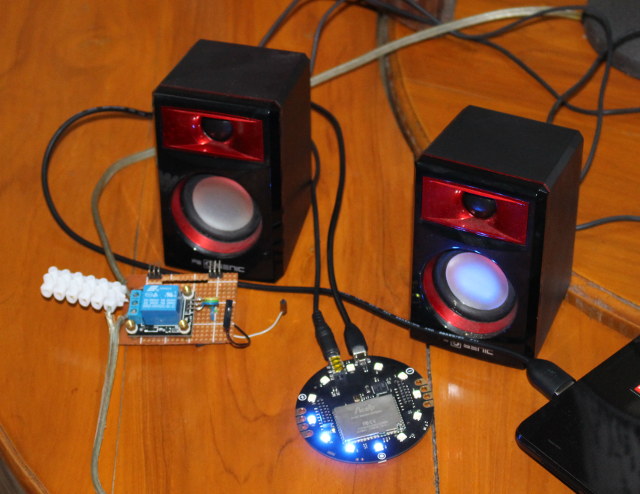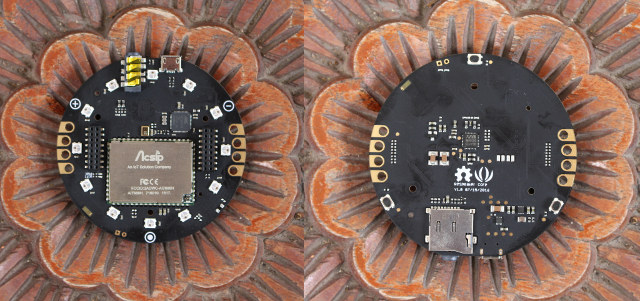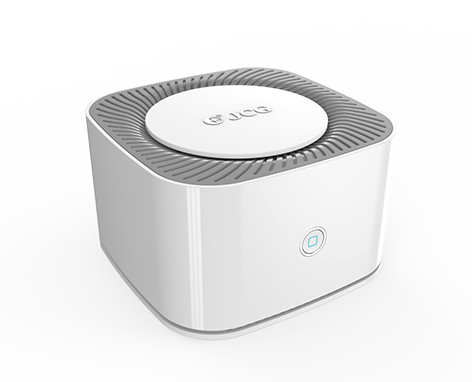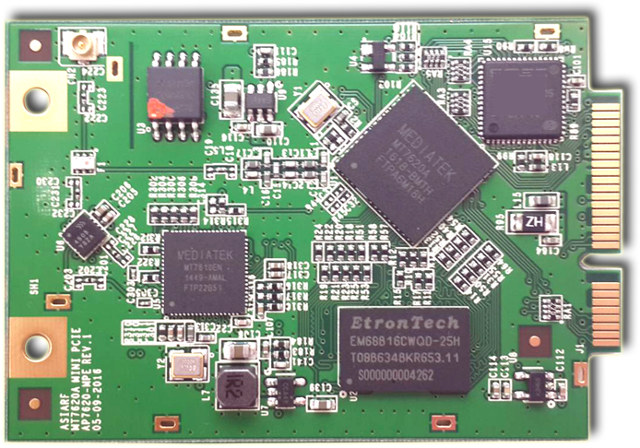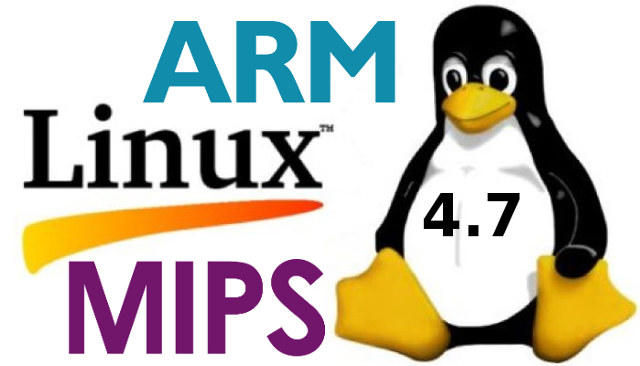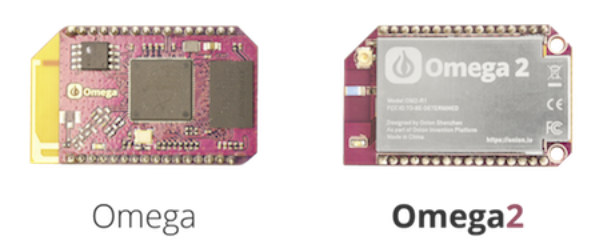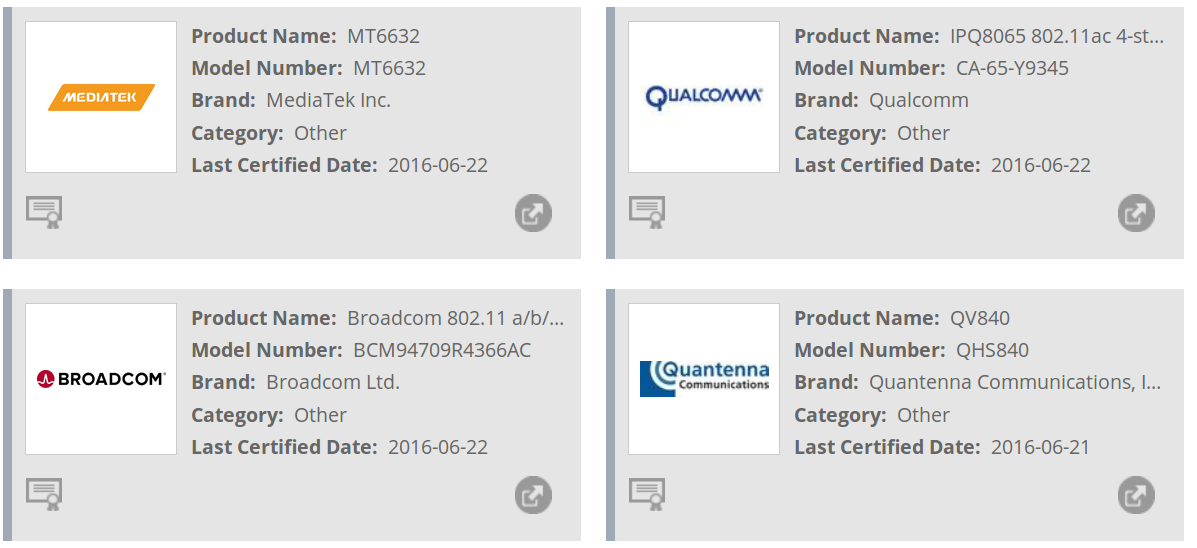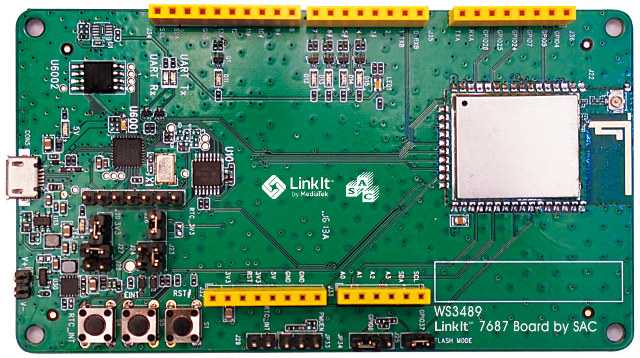ReSpeaker is a development board combining an Atmel AVR MCU, a MediaTek MT7688 WiFi module running OpenWrt, a built-in microphone, an audio jack, and I/O headers to allow for voice control and output for IoT applications. That means you could make your own Amazon Echo like device with the board and add-ons, use it as a voice controlled home automation gateway and more. The board was launched on Kickstarter a few days ago, and already raised $100,000 from about 100 backers, but I’ve received an early sample, so I’ll provide some more information about the firmware, and shows how to use with some Python scripts leveraging Microsoft Bing Speech API. You’ll need a micro USB to USB cable to connect your to computer (Linux, Windows, Mac OS…), and a speaker to connect to the board. Linux (OpenWrt) boots in a few seconds, and once it’s done all RGB LED will […]
ReSpeaker WiFi IoT Board is Designed for Voice Interaction (Crowdfunding)
More and more devices are supporting voice interaction nowadays from your smartphone to devices like Amazon Echo, but so far, I had not seen development boards specifically designed for that purpose, and that’s exactly what Seeed Studio ReSpeaker board does by combining audio capabilities, WiFi connectivity, and I/O headers. ReSpeaker Core board specifications: WiFi Module – Acsip AI7688 Wi-Fi 802.11 b/g/n module based on Mediatek MT7688 MIPS SoC Storage – micro SD card slot USB – 1x micro USB port for programming and power Audio – 3.5mm AUX port, WM8960 audio codec, 2-pin header for external speakers Expansion – 2x 8-pin expansion headers for I2C, GPIO and USB 2.0 host connected to MT7688, built-in microphone. MCU – Atmel ATMega32U4 @ 16 MHz Misc – 12x RGB LEDs, 8x touch sensors, 3 push buttons Power Supply – 5V DC Dimensions – 70mm diameter Weight – 70 grams The board runs OpenWrt, […]
Hacker H3 Smart Home Multimedia Gateway Combines Amlogic S905 and Mediatek MT7628AN Processors
There are plenty of Amlogic S905 TV boxes on the market, but Hacker H3 has some notable features such as an internal 2.5″ SATA bay, as well as MediaTek MT7628AN WiSoC and MT7612E 802.11ac 867Mbps chip to provide router functionality via one WAN port, two LAN ports, and WLAN. Hacker H3 media gateway specifications: Media SoC – Amlogic S905 quad core Cortex A53 processor @ up to 2.0GHz with penta-core Mali-450MP GPU System Memory – 1GB DDR3 @ 1866MHz Storage – 16 or 64GB eMMC flash + 1x SATA bay up to 6TB Network SoCs – Mediatek MT7628AN MIPS 24KEc CPU @ 580MHz + Mediatek MT7612E 867Mbps 802.11ac chipset Video Output – HDMI 2.0 port up to 4K @ 60 Hz Audio Output – HDMI + 3.5mm audio jack Connectivity WiFi 802.11 b/g/n up to 300 Mbps, 802.11ac up to 866 Mbps (AC1200 router) with two built-in antennas 2x 10/100M […]
AsiaRF AP7620-MPE-1 OpenWrt WiFi Router mini PCIe Card is Made for Computers and Embedded Systems
There are many mini PCIe WiFi modules on the market, but what AsiaRF provides with AP7620-MPE-1 is a little different, as it’s a router based on Mediatek MT7620A fitted into a mini PCIe card to be plugged inside a computer or embedded system. AP7620-MPE-1 mini PCIe card specifications: SoC – Mediatek MT7620A MIPS 24KEc CPU @ 580MHz with 2T2R WiFi 802.11 b/g/n (but board only supports 1×1) 802.11ac WiFI Chipset – Mediatek MT7612E AC1200 chipset limited to 433 Mbps [Changed to MT7610E chipset @ 433 Mbps] System Memory – 64 or 128MB DDR2 Storage – 8 or 16MB SPI flash WiFI features Security: 64/128-bit WEP, TKIP, WPA, WPA2, AES; 802.1X Authentication with RADIUS Client Multi-mode support: Access Point/Client mode Support Multiple SSIDs mini PCIe interface with USB2.0 to Ethernet, UART, 8 GPIOs, 1.5V, 3.3V and ground Dimensions – 60 x 41.5 mm (bigger than standard mini card: 50.95 x 30 […]
Linux 4.7 Release – Main Changes, ARM and MIPS Architectures
Linux 4.7 is out: So, after a slight delay due to my travels, I’m back, and 4.7 is out. Despite it being two weeks since rc7, the final patch wasn’t all that big, and much of it is trivial one- and few-liners. There’s a couple of network drivers that got a bit more loving. Appended is the shortlog since rc7 for people who care: it’s fairly spread out, with networking and some intel Kabylake GPU fixes being the most noticeable ones. But there’s random small noise spread all over. And obviously, this means that the merge window for 4.8 is open.Judging by the linux-next contents, that’s going to be a bigger release than the current one (4.7 really was fairly calm, I blame at least partly summer in the northern hemisphere). Linus Linux 4.6 brought USB 3.1 superspeed, OrangeFS distributed file system, 802.1AE MAC-level encryption (MACsec), and BATMAN V protocol support, improved […]
Onion Omega2 is a $5 Linux WiFi IoT Board (Crowdfunding)
Onion Omega board was first introduced in 2015. The tiny OpenWrt Linux board featured an Atheros AR9331 processor with GPIO headers, and various baseboards and add-ons. The company has now launched a Kickstarter campaign for the second versions – Omega2 & Omega2 Plus – with a faster processor @ 580 MHz, compatible with docks and add-ons boards used for Omega, and a much lower price with $5 for the Omega2, and $9 for Omega2 Plus with more storage and memory. Omega2 & Omega2 Plus specifications: WiSoC – 580 MHz processor, possibly Mediatek MT7688 MIPS processor used in LinkIt Smart 7688 System Memory Omega2 – 64MB Omega2 Plus – 128MB Storage Omage2 – 16MB flash Omega 2 Plus – 32MB flash + micro SD slot Connectivity Built-in – 802.11 b/g/n WiFi with on-board and external antenna support Via add-on boards – Bluetooth 4.0 LE, GPS, and 2G/3G Expansion – 15x GPIO, […]
Wi-Fi CERTIFIED ac Wave 2 Products Support MU-MIMO, 160 MHz Channels, and More
802.11ac WiFi is now found in many routers and devices, and the Wi-Fi alliance has so far certified close to 3,000 “Wi-Fi CERTIFIED ac” products. I understand that certification is not mandatory, but if you want to make sure a device works well, the certification at least means the devices have been tested for interoperability, security and application specific protocols, and found to work in a satisfactory manner. Now the Wi-Fi alliance has announced Wi-Fi CERTIFIED ac Wave 2 certification program with the following new requirements: MU-MIMO (Multi-user Multiple Input Multiple Output) in order to send data to multiple devices at once to improve overall network efficiency and throughput 160 MHz channels support (not only 80 MHz) potentially doubling transmission speeds Four spatial streams instead of just three spatial streams. Extended 5 GHz channel support by adding more channels in the 5 GHz to reduce interference and congestion. Currently the […]
$20 MediaTek LinkIt 7687 Arduino Compatible WiFi IoT Board Runs FreeRTOS
MediaTek Labs has already launched several WiFi boards for IoT applications starting with LinkIt ONE, and later LinkIt Smart 7688 running OpenWrt, and the company is now about to launch LinkIt 7687 HDK (Hardware Development Kit) powered by Mediatek MT7687F Cortex-M4 SoC, running FreeRTOS, and developed & produced by Silicon Application Corp (SAC). LinkIt 7687 (WS3489) board specifications: SoC – MediaTek MT7687F ARM Cortex-M4F MCU @ 192MHz with 352 KB SRAM, 64KB ROM, and 2 MB serial flash in package, integrated security engine, and built-in 802.11n WiFi. 8×8 mm 68-pin QFN package Connectivity – 1×1 802.11 b/g/n WiFi with on-module PCB antenna and U.FL connector. USB – 1x micro USB for power, debugging (Coresight Debug Access Port + Virtual COM) Expansion Arduino Uno Rev. 3 headers + an extra 8-pin extension connector. Mass Storage Device (MSD) flash programming interface. Reserved headers for power consumption (current) measurement. Misc – LEDs for […]


